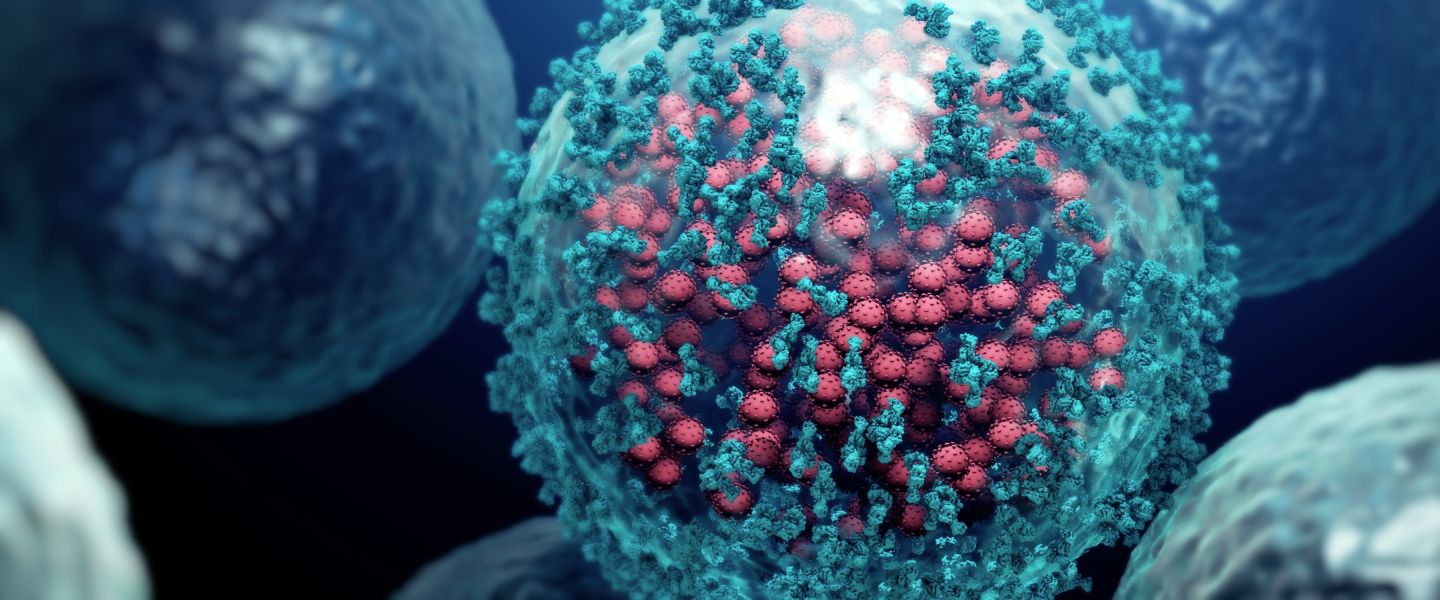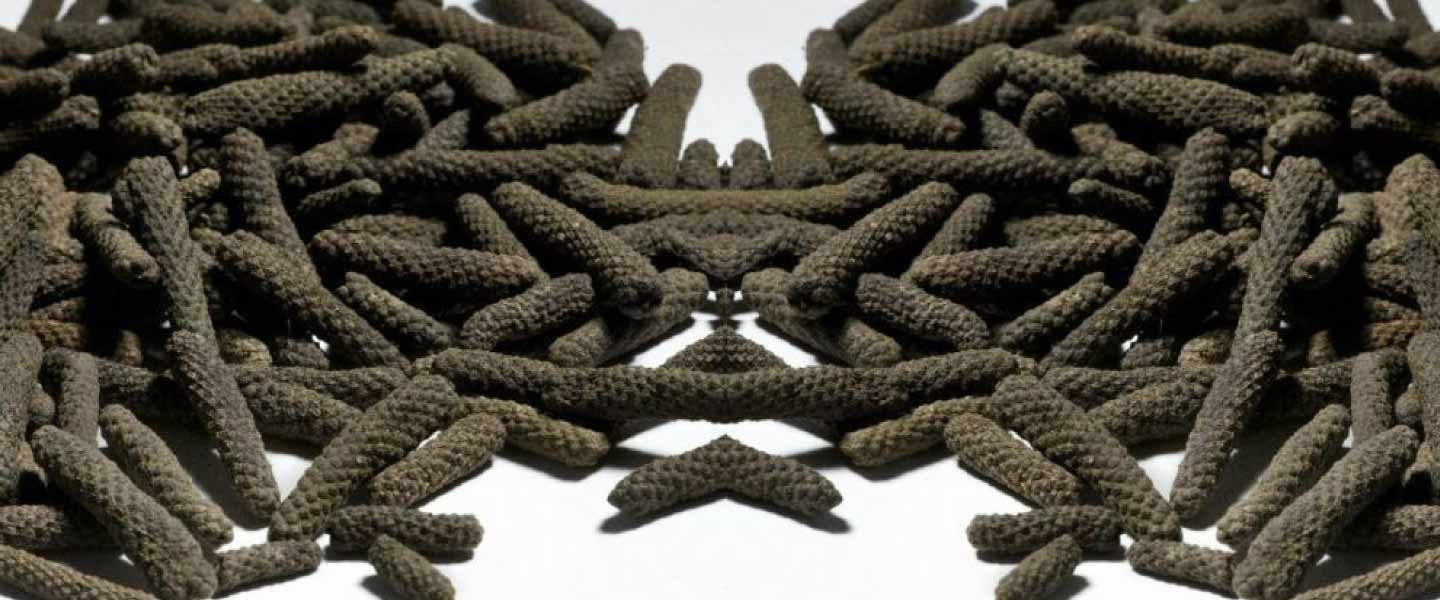SHARING / REPOSTING GUIDELINES: We're very happy to have posts/articles shared as direct links.
However, if you are replicating and re-posting information from this website or our posts, Abbey requests that you:
A) Only ever share articles in part (not in full). (eg. You can lift a paragraph as a way of introducing your readers to the topic) B) Be sure to always provide a direct link/URL back to the full original article here on the MyHealingCommunity.com website. Thanks in advance for your co-operation when sharing and re-posting any and all information that appears on this website.
Silymarin exhibits anti-cancer and liver protective qualities even with estrogen-positive cancers.
Silymarin, derived from milk thistle seeds, exhibits a multifaceted effect on cancer cells, targeting various cellular components simultaneously. This versatile compound shows promise as a potential chemopreventive agent due to its ability to influence multiple proteins and genes.
The chemopreventive action of silymarin is particularly noteworthy as it can impact all three crucial stages of carcinogenesis: initiation, promotion, and tumour progression. It achieves this by regulating several key cellular processes:
- Balancing phase I and II metabolism enzymes
- Influencing cell cycle progression
- Promoting apoptosis (programmed cell death)
Furthermore, silymarin's potential extends beyond chemoprevention to chemosensitization. In this capacity, it can enhance the effectiveness of anticancer treatments through various mechanisms:
- Modulating the balance of phase I and II enzymes
- Amplifying the impact of cancer drugs that target specific cell cycle phases
- Reactivating cell death pathways, including both intrinsic and extrinsic mechanisms
These properties make silymarin a compelling subject for cancer research, as it offers multiple avenues for cancer prevention and treatment intervention.
Silymarin's effects on normal cells vs. cancer cells:
Silymarin exhibits a dual nature in its impact on normal cells versus cancer cells. In normal cells, its antioxidant properties help protect against oxidative stress and damage.
"Silymarin as Supportive Treatment in Liver Diseases: A Narrative Review" highlights that Silymarin's hepatoprotective properties are attributed to its antioxidant activities in normal liver cells. It also notes its potential benefits in patients with cirrhosis and its ability to improve glycemic control in patients with concomitant diabetes.
https://www.ncbi.nlm.nih.gov/pmc/articles/PMC7140758/
Silymarin anti-cancer research findings indicate it broadly impacts various cancer-related pathways, highlighting its potential as a multi-targeted therapeutic agent in cancer prevention and treatment.
-
- PI3K/Akt: ↓
- MAPK/ERK: ↓
- NF-kB: ↓
- Wnt/β-catenin: ↓
- TGF-β: ↓
- Stat3: ↑↓
- Akt/mTOR: ↓
- AP-1: ↓
- p53: ↑
- AK/STAT: ↓
- Apoptosis pathways: ↑
- Cell cycle regulation: ↓
- Angiogenesis: ↓
- Metastasis: ↓
- Inflammation: ↓
Note: In this list, ↑ upregulation, ↓ downregulation, and ↑↓ variable effects are indicated depending on the specific context or cancer type.
Promotion of apoptosis (programmed cell death) and inhibition of the proliferation of cancer cells.
Silibinin, a component of silymarin, has been shown to reduce levels of Bcl-2, a protein associated with poor patient survival, in various cancer cell types. This effect has been observed in:
- Human breast cancer cells (MCF-7, T47D)
- Glioma cells
- Ovarian cancer cells
- Melanoma cells
- Pharynx squamous cell carcinoma
- Colon cancer cells
- Cervical cancer cells
Conversely, silibinin increases the expression of Bax, a pro-apoptotic protein, subsequently activating caspase-3. These effects appear to be mediated through the PI3K pathway. Specifically, silibinin inhibits PI3K, reducing Forkhead box M1 (FoxM1) levels. This cascade of events ultimately triggers the mitochondrial apoptotic pathway
"Multitargeted Therapy of Cancer by Silymarin" This study reports that Silymarin modulates the balance between cell survival and apoptosis by interfering with cell cycle regulators and proteins involved in apoptosis. It also demonstrates anti-inflammatory and anti-metastatic activity. https://www.ncbi.nlm.nih.gov/pmc/articles/PMC2612997/
Silymarin and Chemotherapy:
Rather than interfering with chemotherapy, some studies suggest that Silymarin may enhance the effects of certain chemotherapy drugs while reducing their toxicity to normal cells.
"Role of Silymarin in Cancer Treatment: Facts, Hypotheses, and Questions" This review discusses how Silymarin synergises with commonly used anti-cancer compounds like doxorubicin and cisplatin. It also mentions that Silymarin reduced cisplatin-induced kidney damage in rats without diminishing the drug's antitumor activity.
https://www.ncbi.nlm.nih.gov/pmc/articles/PMC8814827/
Anti-inflammatory Properties of Silymarin:
Silymarin regulates cytokines responsible for inflammation. It down-regulates COX-2 expression and inhibits the NF-κB transduction cascade, key mediators of the inflammatory pathways that can lead to chemo-resistance and progression.
Antifibrotic action:
Silymarin helps prevent liver fibrosis by inhibiting the transformation of stellate cells into myofibroblasts, which are responsible for excessive collagen deposition in the liver.
Silymarin, Milk Thistle, and Estrogen-Positive Cancers
Recent research has shed light on the complex relationship between Silymarin, the active compound in milk thistle, and estrogen-positive cancers. This relationship centres around Silymarin's interaction with estrogen receptors, particularly its affinity for estrogen receptor beta (ERβ).
There are two main types of estrogen receptors: ERα and ERβ. These receptors play different roles in the body:
ERα: This receptor is often associated with promoting cell proliferation and is commonly overexpressed in breast cancer cells. Many estrogen-positive cancers are driven by ERα activation.
ERβ: Generally considered to have anti-proliferative effects, ERβ is often described as a tumour suppressor. Its presence is usually associated with a better prognosis for breast cancer.
Silymarin's Interaction with Estrogen Receptors
Silymarin has been found to act as a selective ERβ agonist. This means it preferentially binds to and activates ERβ while having less affinity for ERα. The preferential binding to ERβ means Silymarin is less likely to stimulate cancer growth through ERα activation.
Silymarin has been shown to inhibit breast cancer cell proliferation in laboratory and animal models. This effect is thought to be mediated, at least in part, through its intSilymarin interacts with the estrogen receptor beta (ERβ).
The binding of Silymarin to ERβ may increase the expression of ERβ, potentially creating a positive feedback loop. Activation of ERβ by Silymarin is associated with concurrent activation of multiple tumour suppressor pathways. Silymarin affects the balance between cell survival and apoptosis by interfering with the expression of cell cycle regulators and proteins involved in apoptosis.
At lower doses, Silymarin induces cancer cell growth arrest through ERK1/2 inhibition. Higher doses lead to cancer cell apoptosis through the MAPK/JNK pathway.
"Role of Silymarin in Cancer Treatment: Facts, Hypotheses, and Questions" https://www.ncbi.nlm.nih.gov/pmc/articles/PMC8814827/
Silymarin Competes with Harmful Estrogens
The human body is exposed to various estrogens, including those produced naturally and xenoestrogens from environmental sources. Xenoestrogens, which include compounds from plastics, pesticides, and industrial chemicals, can mimic estrogen in the body and potentially promote cancer growth. Microplastics have emerged as a significant concern in recent years. These tiny plastic particles can accumulate in the environment and food chain, potentially exposing humans to harmful chemicals:
Some microplastics can leach estrogenic compounds, and many of these show a higher binding affinity for ERβ compared to ERα.
- Microorganisms growing on microplastics may also produce estrogenic metabolites.
- Fish and other marine life eat or uptake microplastics, potentially transferring them up the food chain to us along with the toxic pathogens attached to them.
- Silymarin's action as an ERβ agonist may help compete with these harmful xenoestrogens for receptor binding, potentially mitigating their effects.
"Exploring the Biological Activity and Mechanism of Xenoestrogens and Phytoestrogens: Unveiling Potential Therapeutic Targets for Cancer"https://www.ncbi.nlm.nih.gov/pmc/articles/PMC8395949/
"Silymarin inhibits proliferation of human breast cancer cells via regulation of the MAPK signalling pathway."https://www.ncbi.nlm.nih.gov/pmc/articles/PMC8100955/
Silymarin's interaction with estrogen receptors, particularly its selective activation of ERβ, presents an intriguing area of research in the context of estrogen-positive cancers. Its potential to compete with harmful xenoestrogens and provide anti-cancer effects warrants further investigation, especially given the increasing concern over environmental estrogens from plastics and chemicals in our homes and workplaces and foods.
Clinical Dosing.
The optimal dosage of Silymarin for liver health is still a matter of debate, but research suggests the following consideration:
Standard dosage: Most studies have used dosages ranging from 420 mg to 600 mg of Silymarin daily for hepatoprotection alone.
Frequency: The individual's total daily dose is divided into 2-3 doses daily. For instance, 140 mg taken three times daily has been the lower range suggested for hepatic cirrhosis.
Higher doses: Some studies have explored higher doses. One study found that oral doses of Silymarin up to 2100 mg daily (divided throughout the day) were safe and well-tolerated. In a phase one clinical trial, 800 mg/day of silymarin was administered for 12 weeks during the patient's methotrexate and 6-mercaptopurine chemotherapy. This resulted in normal liver transaminase levels and no interruption of therapy.
Pharmacokinetics: Silymarin undergoes extensive metabolism and has a relatively short half-life, which suggests that multiple daily doses might be more effective in maintaining consistent blood levels.
Study protocols: Most clinical trials have used multiple doses rather than once-daily administration. Given these factors, 2-3 times daily dosing may be preferable to once-daily dosing to maintain more consistent levels of Silymarin in the body. However, if interactions with other medications are a concern, a once-daily dose will benefit some individuals and be more practical.

Sourcing Purity
Milk Thistle Extract [Silybum marianum], 500mg seed standardised to min 80% Silymarin
Each vegan capsule contains 400 mg silymarin a dietary supplement.
Use our study group discount code abbey5 for a 5% discount on MCS Formulas.
Learn more here at MCS Formulas
Silymarin's Known Interactions with Medications
It's important to note that while milk thistle is generally considered safe, it can interact with certain medications and may not be suitable for everyone. Always consult with a trusted practitioner who can monitor you before starting any new supplement regimen, especially when dealing with liver health issues and cancer.
Interactions with Common Cancer Medications and Timing Considerations
Silymarin, the active component in milk thistle, may interact with certain medications commonly used by cancer patients. Here's an overview of potential interactions and timing considerations:
Chemotherapy Drugs
Silymarin has been shown to interact with some chemotherapy agents, and it's worth knowing if the CYP3A4 enzymes metabolise your current cancer medications. If so, you may still be able to take Milk Thistle; however, some timing considerations will be needed if you plan to avoid interactions. Note that some patients are looking to create interactions to increase levels of the drug, not wanting to prevent them, and each case is unique.
What we know
Irinotecan: Silymarin may increase blood levels of irinotecan by slowing down its metabolism, potentially increasing side effects.
Doxorubicin: Some studies suggest Silymarin may enhance the effects of doxorubicin against cancer cells while reducing its cardiotoxicity. However, more research is needed to confirm this potential benefit.
Cisplatin: Silymarin may help protect against cisplatin-induced kidney and liver toxicity without interfering with its anti-cancer effects.
Erlotinib: Silymarin may increase blood levels of erlotinib by inhibiting the CYP3A4 enzyme responsible for its metabolism.
Imatinib: Like erlotinib, Silymarin may increase imatinib levels by inhibiting CYP3A4.
Tamoxifen: Silymarin may enhance the effects of tamoxifen in breast cancer treatment, but it could also potentially increase the risk of side effects.
Dexamethasone: Silymarin may increase blood levels of dexamethasone by competing with its metabolism.
Timing Considerations
The half-life of Silymarin is relatively short, around 6 hours. However, its effects on drug-metabolising enzymes may persist longer. If you want to minimise potential interactions:
- Wait at least 4 hours between taking Silymarin and other medications.
- For chemotherapy drugs, consider avoiding Silymarin for 24-48 hours before and after treatment.
- For daily medications like targeted therapies or hormonal treatments, maintain consistent timing and dosing of Silymarin. Monitor closely for increases in medication side effects and adjust accordingly.
Consult with an integrative oncologist, naturopathic oncologist, naturopath, functional medicine practitioner or pharmacist for personalised advice, as the optimal timing may vary depending on the specific drug regimen and individual patient factors.
While Silymarin is generally considered safe, cancer patients should always consult their healthcare team before adding any supplements to their treatment regimen. The potential benefits of Silymarin for liver health should be weighed against the risk of drug interactions on a case-by-case basis.
Research
"Clinical Pharmacokinetics of Silymarin" https://link.springer.com/article/10.2165/00003088-200544020-00003
"Effect of Hepatic Dysfunction due to Liver Metastases on the Plasma Pharmacokinetics of Docetaxel" https://aacrjournals.org/clincancerres/article/5/7/1696/287597/Effect-of-Hepatic-Dysfunction-due-to-Liver
"Exploring the Biological Activity and Mechanism of Xenoestrogens and Phytoestrogens: Unveiling Potential Therapeutic Targets for Cancer" https://www.ncbi.nlm.nih.gov/pmc/articles/PMC8395949/
"Herb-Drug Interactions in Oncology: A Clinical Review" https://www.ncbi.nlm.nih.gov/pmc/articles/PMC6409400/
"Interactions between complementary medicines and drugs: An update" https://www1.racgp.org.au/ajgp/2023/june/interactions-between-complementary-medicines-and-d
"Milk Thistle- Sloan Kettering Institute" https://www.mskcc.org/cancer-care/integrative-medicine/herbs/milk-thistle
"Alterations in Hepatic Metabolism of Drugs" https://www.ncbi.nlm.nih.gov/books/NBK12508/
"Milk Thistle (PDQ)–Health Professional Version"https://www.cancer.gov/about-cancer/treatment/cam/hp/milk-thistle-pdq
"Milk Thistle (PDQ)–Patient Version" https://www.cancer.gov/about-cancer/treatment/cam/patient/milk-thistle-pdq
"Milk Thistle: Effects on Liver Disease and Cirrhosis and Clinical Adverse Effects" https://www.ncbi.nlm.nih.gov/books/NBK11896
"Milk Thistle Drug Interactions" https://www.pharmacytimes.com/view/milk-thistle-drug-interactions
"Milk Thistle Uses, Benefits & Dosage" https://www.drugs.com/npp/milk-thistle.html
"Multitargeted therapy of cancer by silymarin" https://www.ncbi.nlm.nih.gov/pmc/articles/PMC2612997/
"Optimal dose of silymarin for the management of drug‑induced liver injury in oncology" https://www.ncbi.nlm.nih.gov/pmc/articles/PMC10067788
"Pharmacology of Silymarin" https://www.medscape.com/viewarticle/422884
"Role of Silymarin in Cancer Treatment: Facts, Hypotheses, and Questions" https://www.ncbi.nlm.nih.gov/pmc/articles/PMC8814827
"Silymarin as Supportive Treatment in Liver Diseases" https://www.ncbi.nlm.nih.gov/pmc/articles/PMC7140758
"Silymarin and Cancer: A Dual Strategy in Both in Chemoprevention and Chemosensitivity" https://www.mdpi.com/1420-3049/25/9/2009
"Silymarin inhibits proliferation of human breast cancer cells via regulation of the MAPK signalling pathway." https://www.ncbi.nlm.nih.gov/pmc/articles/PMC8100955
"Silymarin, a flavonoid from milk thistle (Silybum marianum L.), inhibits UV-induced oxidative stress through targeting infiltrating CD11b+ cells in mouse skin." https://www.nature.com/articles/6600448
DISCLAIMER: Any and all information in this post was gathered from published research in cell lines or animals, or from typical clinical use. It may not be complete, may not have not been verified in humans, and is NOT meant or given as medical advice, but only as a guide to further exploration.
Continue Reading...
BLOG







